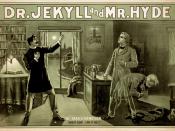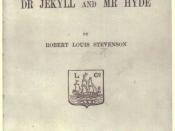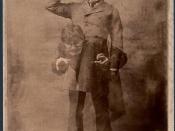H.G. Wells' (1866-1946) 'The Time Machine' (1894) consists mainly of his predictions of what could happen in the future, according to his time. The Time Traveller travels forward to the year 802,701AD, but still in England is his, evolved, back garden. When he arrives, he finds two completely different social worlds: the Upper classes have become weak and their intellect decreased, whereas the Working class have moved underground and have become cannibalistic.
Wells starts off his short story within the comfort of an expensive home; he emphasises the contrast to the rest of the book, examples of which includes flowing language, drinking of champagne and a warm fire. We also find educated men, to represent the best of the Human Race. These men include a Mathematician, a Doctor and a Physician.
The Time Traveller tells his story in dim light; he tells how he meets the Eloi. The Eloi are short, frail and have the face of Tuberculosis patients.
These strange people all wear a fantastically made purple robe and strong sandals. Wells describes their language as, "a strange and very sweet and liquid tongue". The Time Traveller produces a theory abut why the land is so beautiful, with fantastic flowers and no weeds. This theory is to do with the breeding of certain flowers to create more beautiful and better-suited ones, so eventually, the weeds die out. When the novella was written, Darwin's Theory of Evolution was the most recent scientific theory, as global warming is for us today. Wells continues to refer to it indirectly throughout the story. These people ironically continue the sense of comfort and security, bringing The Time Traveller into a false sense of safety. Then the Time Machine goes missing!
The dreaded Morlocks are supposedly the ultimate evolution of the Working class.


